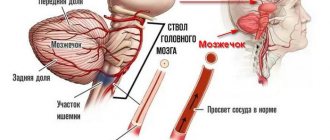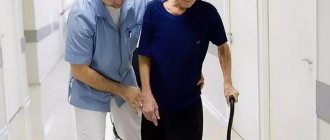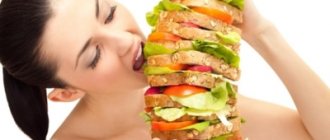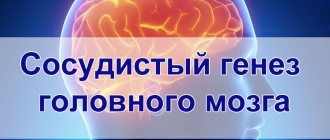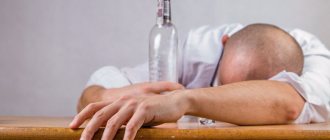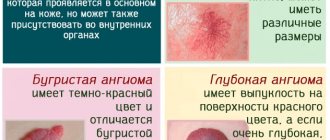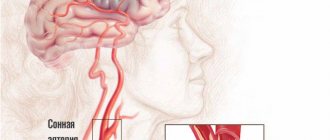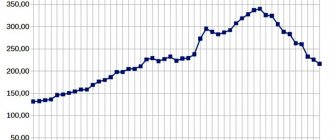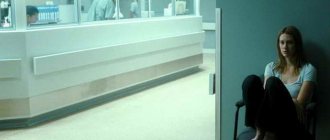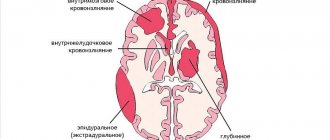One third of the total mass of the human cerebral hemispheres is in the frontal lobes. If blood circulation is disrupted in this particular part of the brain, then, first of all, all cognitive (cognitive) processes suffer.
The main causes of impaired blood flow in the vessels of the frontal lobes of the brain are exacerbations of hypertension, atherosclerosis, some congenital pathological diseases of blood vessels, poor blood clotting, and a tendency to thrombus formation. All this leads to a stroke. Depending on its mechanism of action, a stroke can be ischemic or hemorrhagic. Further, in turn, the stroke leads to the development of frontal syndrome. It is important to note that stroke is not the only cause of this disease. However, symptoms may
Symptoms of frontal stroke
Frontal stroke most often manifests itself in the form of general cerebral symptoms:
- A person experiences acute pain in the front of the head, nausea and vomiting.
- Dizziness leads to loss of consciousness.
- A high body temperature may rise.
Specific symptoms of frontal stroke:
- Rudimentary reflexes appear: sucking, grasping, searching (in the case of extensive damage to the frontal lobes);
- A person loses the ability to control his own actions;
- The sense of self-awareness is lost;
- There are motor and speech disorders;
- The ability for abstract thinking and planning is lost;
- The functions of memory, attention and will of a person are impaired;
- The victim is unable to focus on anything, cannot solve complex problems, make logical connections, form concepts, etc.
Symptoms may also vary depending on the location of the damage. In case of a stroke on the left side of the frontal part of the brain, a person's verbal behavior is impaired. He is unable to quickly remember and name familiar objects, and cannot speak at a fast pace. If the damage occurs on the right side of the frontal part of the brain, then nonverbal fluency is impaired.
It is believed that lesions in the prefrontal region of the brain lead to disruption of a person’s executive functions. A person who has suffered a stroke of the frontal lobes may retain some motor functions, intelligence and perception, but at the same time the behavior and the very personality of the victim are distorted. Often such consequences are unnoticeable while the patient is still being treated in a medical facility. But over time, these deviations will become more and more apparent. The doctor’s task is to collect a complete history of the onset and course of the disease in order to subsequently correctly prescribe the necessary therapy.
Consequences of frontal stroke
The consequences of a frontal stroke can be expressed in the form of frontal syndrome. There are two types of this disease: abulic and disinhibited.
The abulic type leads to the loss of a person’s ability to think creatively, initiative, and curiosity. Often there is a disturbance in the emotional background, manifested in the form of apathy and indifference.
The disinhibited type of frontal syndrome is directly opposite to the abulic type - impulsive behavior occurs, a person loses common sense in their actions, and is unable to foresee the consequences of their actions. Memory and thinking are completely preserved. Thus, a person is able to characterize his actions in possible situations, but in practice he will act completely inadequately and unpredictably.
An acute loss of nutrition to an area of brain tissue due to spasm or blockage of an artery is called an ischemic stroke. It accounts for approximately 80% of all vascular lesions of the brain and is often the cause of death and disability in patients. Focal and cerebral manifestations persist for a long time, and treatment and rehabilitation continue for more than a year.
Read in this article
Consequences of brain stem damage
Trunk stroke is characterized by a high mortality rate. Even if the victim can survive, he will completely or partially lose certain functions. Timely treatment and rehabilitation do not guarantee the restoration of lost skills. The consequences of brainstem stroke depend on the form of the disease, location and extent of brain damage.
Death is caused by stem swelling with pinching of the area under the meninges. This causes heart failure, respiratory blockage, and epileptic seizures. With large-scale tissue damage, urinary tract infections, thrombosis, pneumonia, and bedsores appear. Myocardial infarction, sepsis, and gastric bleeding may develop.
Attention. Patients with mild cerebrovascular accidents who are able to walk often fall and break limbs, which also leads to death.
Swallowing dysfunction
Swallowing problems after a stroke are called dysphagia. The skill is difficult to restore; special techniques are used for this. Initially, the victim is taught the ability to swallow crushed food.
Such a swallowing disorder reduces the effectiveness of the entire rehabilitation program, since the patient receives food using gastrostomy tubes.
Speech disorders
Damage to the brain stem leads to speech impairment, which is accompanied by difficulties with pronunciation and understanding of some words. People begin to speak quietly, indistinctly, inarticulately. This pathological phenomenon has a favorable prognosis.
It is necessary to work with a speech therapist. After completing the course, the patient continues the exercises at home.
Deterioration in limb functionality
A brainstem stroke always leads to impaired motor functions. The patient begins to involuntarily wave and move his arms and legs. This is due to loss of control over the muscular system.
It is possible to restore motor skills only in the first months after the stroke. The more time has passed after the blockade, the worse the prognosis: it will be impossible to regain muscle strength.
Problems with coordination
The phenomena of ischemia and hemorrhage during a brainstem stroke provoke dizziness, which impairs coordination of movements. The painful sign must be eliminated as soon as possible.
Causes and risk factors for ischemic stroke
The main pathological conditions in which the risk of acute cerebral ischemia increases include:
- transient disturbances of cerebral blood flow due to narrowing of the lumen of the carotid artery;
- hypertension and symptomatic hypertension;
- smoking;
- high levels of cholesterol, triglycerides, homocysteine in the blood;
- age over 60 years;
- atrial fibrillation;
- diabetes;
- atherosclerosis of the coronary arteries with myocardial ischemia;
- chronic alcoholism and drug addiction;
- previous stroke;
- obesity;
- low physical activity;
- taking hormonal contraceptives;
- migraine attacks;
- burdened heredity;
- acute and chronic stress.
Less commonly, strokes occur against the background of vasculitis, antiphospholipid syndrome, meningitis, Moya moya disease, blood diseases, compression of the vertebral artery in the cervical spine, and congenital vascular anomalies.
Read more about drug treatment for stroke here.
Therapy methods
If any type of stroke is suspected, a person is urgently hospitalized for emergency medical care. Only a third of patients with damage to the brain stem survive the stroke, and even for them the prognosis for recovery after a brain stem stroke is unfavorable.
Surgical intervention
The hemorrhagic form of the pathology often leads to death. Therefore, if this type of stroke is suspected, brain surgery is performed urgently.
Cranial trephination helps eliminate hemorrhage in the shortest possible time, this allows you to quickly reduce the pressure inside the skull.
When diagnosing an ischemic type of stroke, a thrombolytic is injected into the affected area. The manipulation is accompanied by drilling of the skull.
Local administration of the drug accelerates the resorption of blood clots. This procedure is not performed for vascular diseases and the presence of aneurysms.
Pharmacological treatment
For ischemic stroke, drug therapy is usually limited. The patient is prescribed drugs that combat cerebral swelling, normalize blood pressure, and restore nutrition to tissue structures.
In case of hemorrhage, the victim takes anticoagulants and thrombolytics. Intravenous medications to stop bleeding may be required. As symptomatic therapy, the patient is prescribed antibacterial medications. Such patients are fed through a special tube.
Symptoms of cerebrovascular accident
The development of acute cerebral ischemia occurs suddenly. The symptoms persist for more than a day. All signs can be divided into focal and cerebral. The first include:
- limb weakness (paresis);
- speech and vision impairment;
- facial distortion;
- difficulty swallowing;
- decreased sensitivity.
In the presence of a focus of critical ischemia in the right hemisphere, patients develop the following clinical signs:
- left-sided paralysis;
- the assessment of the size and number of parts of one’s body and surrounding objects is impaired;
- current memory is lost, but the past is clearly remembered;
- the left field of vision is absent;
- the patient does not recognize the severity of his condition;
- difficulty concentrating;
- depressive reactions alternating with goofy behavior;
- loss of behavioral inhibitions.
This disease is characterized by a variety of symptoms, an unfavorable course and a long rehabilitation period.
Patients are conscious or stunned; with severe cerebral edema, cerebral coma may develop. Impaired movement, sensitivity and a drop in muscle tone are noted on the right side of the body, speech and logical thinking suffer, and depression is characteristic. In addition, depending on the location of the blockage of the vessels that supply the brain cells, patients experience the following abnormalities:
- weakness of the tongue and facial muscles on the right;
- loss of the right field of vision, a decrease in the ability to recognize objects, up to complete blindness;
- difficulties in writing, reading, counting;
- impaired urine output;
- weakening of memory;
- decreased criticism and abnormal behavior.
Signs of left-sided cerebral infarction in the carotid region
Ischemic stroke in the internal carotid artery system is caused by severe hemodynamically significant stenosis or blockage within or extracranial of the left internal carotid artery. With thrombosis in the extracranial part of the internal carotid artery on the left, patients develop hemiparesis in combination with central paresis of the tongue and facial muscles, significant sensory impairment and the formation of visual field defects on the right (the opposite side of the body is affected).
With left-sided damage to the internal carotid artery, opticopyramidal syndrome may develop, which is characterized by decreased vision or complete blindness on the side of the blockage (left) in combination with hemiparesis of the right side of the body.
Ischemic cerebral stroke with intracranial blockage of the internal carotid artery on the left is manifested by right-sided hemiplegia and hemianesthesia in combination with severe cerebral symptoms: severe headache, vomiting, significant impairment of consciousness and/or psychomotor agitation and the formation of a secondary brainstem syndrome.
Classification
Depending on the underlying disease, ischemic strokes are cardioembolic and atherothrombotic; according to the extent of the process, lacunar and minor strokes are divided into separate forms. The group of others includes rare and unclear causes of pathology.
If a blood clot has formed in the cavity of the left atrium or left ventricle, then with the movement of blood it can enter the bloodstream of the brain and lead to complete blockage of the artery. Patients at high risk of embolism include those with:
Occurs due to the development of atherosclerosis and blockage of the vessel by a thrombus or a detached part of a loose or ulcerated plaque. The source of such emboli can be the aortic arch, the system of brachiocephalic vessels, or intracranial large arterial branches. Most often combined with vasospasm.
This type of stroke occurs against the background of arterial hypotension. A sharp drop in blood flow to the brain can result from:
- quick change from horizontal to vertical position;
- deep dream;
- physical activity;
- intense cough;
- taking a large dose of antihypertensive drugs;
- heart attack;
- blood loss, dehydration;
- arrhythmia;
- low blood output from the left ventricle.
These factors limit cerebral blood flow and, with severe atherosclerotic changes in the arteries, can provoke acute cerebral ischemia.
It usually occurs in hypertensive patients. The typical cause is thrombosis of small arterial pathways. The lesions are located in the internal medullary capsule, subcortical nuclei and corpus callosum. It has 25 flow options, of which the most common are:
- purely motor form;
- Sensory impairment only;
- mixed (motor and sensory changes);
- speech impairment and clumsy hand;
- weakness in the limbs and dizziness.
This type occurs with vascular spasm or incomplete blockage. The signs that appear gradually disappear within 20 days from the onset of the disease. A constantly relapsing course and transition to a more extensive lesion is possible with insufficient treatment.
Rare background pathologies in ischemic stroke include increased coagulation capacity of the blood, dissection of the vascular wall, and vascular damage in systemic vasculitis. In some patients it is impossible to detect the cause, or there are too many of them, so it is difficult to identify a specific one.
Headache after stroke: causes, diagnosis, treatment
More than half of people after a stroke complain of prolonged headaches. Neurologists explain this syndrome as completely natural consequences of a vascular accident. Drug treatment can help you quickly manage pain, recover from a stroke, and prevent relapses. However, there are several reasons why the headache continues for a long time.
Accompanying signs
Headaches after a stroke are not the only ones that occur. Along with them, the following manifestations are often observed:
- Attacks of dizziness. When the patient begins to feel very dizzy, he cannot even move independently.
- Nausea. A person feels sick due to dizziness and pain, which provoke this unpleasant feeling.
- Paralysis. It can paralyze one side of the body: right or left, or partially, just an arm or leg.
- Swallowing and speech dysfunction.
The pain can vary in severity depending on what type of stroke the patient had. After an ischemic type of pathology, the pain syndrome is characterized by moderate intensity; after a hemorrhagic disease, the pain is more intense.
Separately, it is worth highlighting a subtype of hemorrhage - subarachnoid hemorrhage. In this case, the pain is severe and appears suddenly and on both sides of the head at once.
ATTENTION!!! Regular headaches should never be ignored. You should visit a doctor as soon as possible and undergo an examination to identify the factor causing such manifestations.
Characteristic symptoms
Headache during a stroke never occurs on its own, but is always combined with additional manifestations. Its intensity and nature will never be the same in all patients, since these indicators will be influenced by the degree of damage to the brain and blood vessels, state of health, concomitant pathologies, and speed of rehabilitation.
The pain itself is different from ordinary migraines and can make significant adjustments to patients’ daily lives. Thus, a small number of people who have suffered a stroke suffer from neuropathic pain, due to which they cannot perform usual activities. This condition lasts no more than 30 days from the moment of the crisis, after which it goes away on its own.
The type of brain damage has a great influence, since the nature of the pain in this case will be different:
- After an ischemic stroke, the pain is intense, but moderate. It occurs against the background of impaired speech function, paralysis of the limbs and impaired clarity of consciousness. The pain sensations have no distinct features.
- After an attack of a hemorrhagic stroke, the pain is severe and pronounced, and the patient may also experience paralysis, speech impairment and confusion.
- Subarachnoid hemorrhage in the meninges is characterized by almost unbearable pain. Occurs spontaneously and may include vomiting, confusion, and neck muscle spasms.
If such symptoms occur, the patient or his family should inform the attending physician as soon as possible..
This condition not only exhausts the patient, but also indicates the occurrence of destructive processes in the brain.
The sooner all the necessary examinations are carried out and the patient begins to be treated, the higher the likelihood of stabilizing the victim’s condition.
Causes of pain
Pain in the head after an ischemic or hemorrhagic stroke occurs for several reasons. These include:
- Violation of reflex processes. Vascular catastrophe leads to them. As a result, pain manifests itself not only during the stroke itself, but also after it.
- Depressive state. Many patients become depressed after a stroke. A constant depressed state of mind provokes pain in the head.
- Taking medications. Medicines prescribed by a doctor to prevent a secondary attack can cause headaches.
- Voltage. Pain in the head often appears due to the fact that a person’s neck muscles are too tense. Such pain can be easily eliminated through massage or exercise.
- Sensitivity to changes in weather. If you have weather sensitivity, headaches often occur when there is a change in atmospheric pressure.
ATTENTION!!! Head pain may not be associated with a stroke, but may be a sign of another developing disease. Therefore, it is important to consult a doctor immediately.
Predisposing factors
Factors contributing to the development of post-stroke headaches are:
- Belonging to the female gender. Women experience this unpleasant symptom 5-6 times more often than men. This is explained by differences in the structure of the female immune and endocrine systems, less serotonin in the brain and periodic fluctuations in the level of sex hormones.
- Age 30-40 years. This group of patients suffers from pain much more often than older people.
- Previously diagnosed migraine.
- Low pressure. It is associated with insufficient cerebral blood supply, which provokes pain.
- More intense pain is typical for patients who have suffered a stroke in the cerebellum or posterior cerebral artery.
Diagnostics
Determining why a patient experiences headaches after a stroke is very important. The cause can be identified using laboratory and instrumental examination. As a rule, doctors prescribe the following procedures:
- magnetic resonance or computed tomography;
- laboratory blood tests;
- angiography;
- ultrasound examination of the heart.
During the examination, the doctor also measures your blood pressure to rule out the development of hypertension.
Therapy
Developed headache during a stroke goes into the post-stroke period and can remain for the rest of his life if the patient is not provided with qualified neurological and psychological assistance. With adequate, timely therapy, headache symptoms go away.
Thus, the earlier treatment for stroke is started, the more favorable the prognosis for the patient. The patient needs certain therapy aimed at improving blood circulation in the brain, reducing pain and relieving depression.
It is divided into medicinal and additional.
Non-drug treatment
Non-drug approaches are used in the treatment of post-stroke pain:
- behavioral psychotherapy;
- development of an adaptive post-stroke strategy;
- Exercise therapy and massage;
- manual therapy;
- a specially selected diet high in folic acid and omega-3 acids.
Modern trends in the treatment of neurological pain after a stroke pay attention to the primary importance of the psychological factor and the implementation of psychological correction of the patient’s personality. The development of a depressive state in post-stroke patients is one of the causes of headaches. That is why psychological help for such patients is so important.
Learning to cope with depression using adaptive psychological strategies results in such patients having lower levels of pain and higher levels of activity and psychological comfort. This generally has a positive effect on the general well-being of the patient.
Physiotherapy and nutrition
To eliminate pain in the head after a stroke, physiotherapeutic procedures are prescribed. Electrophoresis is often performed, with the help of which medications enter the body through electrodes connected to the forehead and back of the head.
Source: https://neuro-orto.ru/bolezni/ynsult/golovnye-boli-posle-insulta.html
Degree of damage
Based on how pronounced the focal and cerebral signs of stroke are, they are divided into three categories:
| Categories | Short description |
| Easy | There are minor neurological disorders that decrease over three weeks, one of the options is a minor stroke; |
| Moderate severity | The patient is conscious, focal signs predominate, and general cerebral signs are not expressed; |
| Heavy | There are general cerebral symptoms, the patient is unconscious, severe neurological disorders, cerebral edema or displacement of brainstem structures. |
Providing emergency assistance
After the first signs of a stroke occur, first aid should be started immediately. Only this can save a person from disability and death.
Necessary:
- lay the victim down, raising his head;
- provide a flow of fresh air;
- free the patient’s body from constrictive clothing and accessories;
- turn your head to the side for better evacuation of vomit;
- Apply a damp towel to the head area.
While waiting for the ambulance to arrive, you need to monitor your blood pressure, heartbeat, and breathing.
When does cerebral edema occur?
Local swelling occurs in the area of circulatory impairment. If the brain damage is severe, and treatment is not carried out, or there are no results from the use of medications, then the following changes occur:
- regulation of vascular tone is disrupted;
- cerebral vessels dilate;
- the pressure inside the arteries and veins increases;
- The liquid part of the blood passes through the walls into the brain tissue.
Impregnation with liquid, swelling and edema of the brain lead to compression of vital centers in the confined space of the skull. Patients gradually lose consciousness, which is manifested by disorientation and lethargy. As edema increases, cerebral coma and convulsive syndrome develop, which is replaced by complete muscle atony. If edema occurs against the background of a gradual deterioration in brain nutrition, then its manifestations are as follows:
- preserved consciousness;
- Strong headache;
- nausea and vomiting;
- disorders of limb movements, impaired coordination;
- decreased vision;
- slurred speech;
- hallucinations.
Watch the video about cerebral edema:
When the brain stem is compressed due to displacement into the foramen magnum region, symptoms appear that are considered extremely life-threatening:
Features of manifestations in women
Due to physiological characteristics, the signs of an impending stroke in men and women are somewhat different, although the general picture is similar. Warning signs of a possible stroke in a woman:
- severe headaches appear for no apparent reason;
- numbness of the upper and lower limbs on the right or left;
- vision is impaired, and double vision is often observed;
- Nausea, vomiting and hiccups occur periodically;
- facial muscles weaken, signs of numbness are observed;
- gestures and speech are difficult;
- sensitivity to pain and temperature changes is impaired;
- the patient loses consciousness for a short time;
- attacks of severe dizziness occur;
- convulsions appear (not in every case).
In addition, changes occur in the woman’s emotional state; a depressive state is replaced by attacks of irritability for no reason.
Treatment of ischemic stroke
The earlier drug treatment is started, the greater the results can be achieved. In the hospital, constant monitoring of blood circulation indicators, the balance of blood electrolytes, respiration, and cerebrospinal fluid pressure is carried out. The following groups of drugs are used:
- oxygen inhalations;
- antiplatelet agents (Clopidogrel, Aspirin), low molecular weight heparins (Fraxiparin, Cibor) and thrombolytics in the first three hours (Actilyse);
- neuroprotectors (Cerebrolysin, Actovegin, Somazina);
- calcium antagonists (Nimotop);
- to prevent cerebral edema (magnesium sulfate, Diacarb, Lysine aescinate);
- antioxidants and metabolic stimulants (Mexidol, Cytochrome);
- stimulants of motor activity (Neuromidin);
- for muscle spasms and convulsions (Mydocalm, Phenazepam).
Recovery and rehabilitation
The first stage of rehabilitation treatment is carried out while the patient is on strict bed rest. At this time, therapeutic exercises begin in the form of passive movements, active flexion and extension in the joints of the unaffected side of the body. Breathing exercises are a mandatory element to prevent decreased ventilation in the lungs. After stabilization of the main hemodynamic parameters, massage is prescribed.
After the appearance of independent movements and sensitivity, the rehabilitation plan includes physical therapy and sessions with a speech therapist to improve speech. At later stages, active restoration of walking, fine movements and self-care is carried out, and special simulators are used.
Prognosis for the patient
The consequences of an ischemic stroke depend on the location of the source of damage to the brain tissue (whether important brain centers are affected), the extent of the process and the age of the patient. The general condition of the body, the circulatory system, and the presence of diseases of the internal organs are of great importance. The first three days are considered the critical period; it is then that cerebral edema increases. Then there is stabilization of the condition and gradual restoration of lost functions.
And here is more information about brainstem stroke.
Ischemic stroke is often associated with atherosclerosis, heart disease, and impaired systemic or local circulation. It is manifested in most cases by focal neurological disorders - weakness of the limbs, impaired sensitivity, vision, speech. Depending on the location of the lesion, the symptoms have their own characteristics.
The most unfavorable course of an extensive stroke, as well as one complicated by cerebral edema. To provide adequate medical care, the patient must be hospitalized as soon as possible in a specialized department. Therapy in the first hours is aimed at dissolving the blood clot in the vessels, then complex drug treatment is prescribed. After a stroke, a long period of rehabilitation is required.
The main precursors of a stroke are quite pronounced. They differ in ischemic and hemorrhagic brains. It is important to notice the first signs in women and men in order to get help sooner.
If there was an ischemic stroke of the brain, the consequences remain quite severe. They differ depending on the affected area - left and right side, brain stem. Symptoms of the consequences are pronounced, treatment takes more than a year.
Ischemic stroke occurs quite often in the elderly. The consequences after 55 years are extremely severe, recovery is difficult and not always successful, and the prognosis is not so optimistic. Brain stroke becomes more complicated in the presence of diabetes mellitus.
When an ischemic stroke occurs, recovery takes a fairly long period. Is full recovery possible? Yes, if you complete a full course of rehabilitation, incl. to restore speech. What are the deadlines? What is needed after a major stroke of the cerebellum on the left side?
Drug treatment for stroke is prescribed to relieve severe manifestations of the disease. In case of hemorrhagic or ischemic brain damage, they will also help prevent the progression and increase of symptoms.
If a young person has a stroke, there is little chance of a full recovery. The causes of the pathology are often hereditary diseases and unhealthy lifestyle. Symptoms include loss of consciousness, convulsions and others. Why does ischemic stroke occur? What treatment is provided?
A real threat to life is a brainstem stroke. It can be hemorrhagic or ischemic. The symptoms resemble a heart attack and are also similar to other diseases. Treatment for a long-term, complete recovery after a brain stem stroke is almost impossible.
The reasons why a cerebellar stroke may occur are quite varied. Stroke can be ischemic, hemorrhagic, or stem. The treatment is long, recovery requires long-term rehabilitation. The consequences are problems with speech and movement.
A dangerous spinal cord stroke can lead to paralysis. The causes can be either congenital or acquired. Symptoms of ischemic stroke can be confused with other diseases. Treatment consists of taking pills, physical therapy and sometimes surgery. The consequences without treatment are dire.
. or: stroke of hemorrhagic type, cerebral hemorrhage, cerebral hemorrhage
What is a cerebral stroke and does a headache occur after a cerebral stroke?
Cerebrovascular stroke (brain stroke) is an acute condition that occurs when nerve damage persists for 24 hours or more.
The reason why a stroke occurs is when the blood supply to certain areas of the brain is interrupted. Interruption of the supply of oxygen-rich blood in 80% of cases is caused by the formation of a blood clot that clogs the vessel.
In other cases, it results in bleeding into the brain due to the rupture of a weakened vessel or due to a combination of these factors.
If neurological symptoms similar to those of a cerebral stroke subside within 24 hours, we are talking about a transient ischemic stroke. The damage is not permanent, and a CT (computed tomography) scan can confirm the presence of a smaller infarction of brain tissue.
A brain stroke is characterized by typical symptoms when it comes to motor and sensory disturbances; headaches are common after a stroke.
Restoring a person’s health depends on the degree of brain damage, timely treatment and subsequent care and rehabilitation. In many cases, even in spite of this, a complete cure may be possible.
On the other hand, cerebral stroke is a common cause of death, with a 20% mortality rate reported within the first month after the incident. The reason why this happens is that a stroke can occur several times, just like an acute myocardial infarction.
Statistics also show that up to 40% of patients recover completely.
Risk factors for developing cerebral stroke
Certainly, in the case of this disease, it can be said that the risk increases with age. Of course, it is possible that a child will also have a stroke. In childhood it often leads to permanent paralysis.
Family history and gender must also be taken into account because men are at higher risk regardless of age; proportionally things are as follows - men: women = 1.5: 1.
Another major factor why a brain stroke may develop is high blood pressure (hypertension).
If a person tends to develop atherosclerosis (narrowing of blood vessels due to fat accumulation), a “clogging” of sclerotic vessels occurs in the brain (vasoconstriction); comes either to their complete blockage, or to the release of fat from another vessel (usually the heart), which enters the brain and clogs the blood vessels.
We should also not forget about diseases that belong to risk groups for the disease. These include diabetes and high levels of body fat (hyperlipidemia).
And, of course, smoking also contributes (a risk factor for many diseases - atherosclerosis, hypertension, etc., which are closely related to stroke).
Other risks may include congenital malformations of cerebral vessels. Stroke at a younger age is often associated with leukemia, infectious diseases, or intoxication (poisoning with alcohol, drugs, or medications).
Preventing Stroke
The main cause of stroke is usually atherosclerosis (hardening of the arteries or blood vessels clogged with deposits of fat and other substances). That is why preventive measures are aimed at eliminating the causes of atherosclerosis and proper rehabilitation after its occurrence.
The main preventive measures are to ensure dietary restrictions on animal fats, salt and cholesterol. It is important that a person's daily meals include more fruits, vegetables, whole grains and legumes.
Another goal is to prevent weight gain, which is why an active lifestyle is recommended.
Last but not least, it is recommended to quit smoking. Smoking, clearly and in any case, is harmful to human health, but with atherosclerosis it doubles the likelihood of developing a cerebrovascular stroke.
The next factor is high blood pressure, which must be carefully monitored as you age (at least after 50 years), after consulting with your doctor, try to follow his recommendations or take appropriate medications. High blood pressure is one of the most common causes of many diseases.
Signs and symptoms of the disease
Stroke can have many manifestations, which are mainly neurological in origin, but in 5% of cases it is asymptomatic (no signs). This fact always depends on the area of the brain that is damaged.
If you are in the presence of a person who has just suffered a cerebrovascular stroke, in most cases, you will recognize him at first sight. It is characteristic that the person looks like he is “not himself”, has a drooping corner of his lips and his tongue to one side. Drooling may also spontaneously ooze from the drooping corner of the mouth.
A person who has suffered a stroke has speech disorders - cannot pronounce words correctly; may also complain of visual impairment in one eye and movement disorders of one half of the body.
The person may be completely immobilized, moving only their eyes (or one eye) and seeing and hearing what is going on around them, but not being able to speak or give you clues about what is happening.
During a stroke, paresis (paralysis, partial loss of motor ability) or plegia (complete paralysis, complete loss of motor ability) often occurs. It is characteristic that paresis and plegia always occur in one half of the body (right or left), and always on the other side than the cerebral hemisphere where the damage to the brain tissue occurred.
Sometimes after the incident, loss of sensitivity also occurs - hypoesthesia.
In addition, headaches are common after a stroke. This occurs mainly due to a disruption in the supply of oxygen-rich blood to the brain tissue. The pain may be accompanied by nausea, disturbances of consciousness and other symptoms.
The affected person also has problems with coordination of movements, orientation in time and place, and cannot express thoughts (unable to find the right words). In severe strokes, even loss of consciousness occurs; death is possible due to disruption of centers that are important for basic life functions and cerebral edema.
With a mild form of the disease, a person may experience only headache and dizziness, and vomiting may also occur. In addition, there may be complaints of blurred vision or double vision.
Complications of the disease
Complications include not only the aforementioned loss of self-sufficiency, long-term rehabilitation, motor and visual disorders, and impaired thinking and speech. A quarter of patients, despite sufficient medical care, remain disabled.
Source: https://zen.yandex.ru/media/id/596a6a468146c12e34f9afda/5974f6eb3c50f73278d2ee02
Forms
Depending on the location of the hemorrhage, the following forms of hemorrhagic stroke are distinguished.
- Subarachnoid hemorrhage (bleeding between the membranes of the brain).
- Intracerebral hematoma (accumulation of blood in the substance of the brain): hematoma of the frontal lobe;
- temporal lobe hematoma;
- hematoma of the parietal lobe;
- hematoma of the occipital lobe.
- Cerebellar hematoma (accumulation of blood in the substance of the cerebellum).
Depending on the presence of a breakthrough (entry) of blood into the cavity system of the brain (ventricles of the brain), the following forms of the disease are distinguished:
- hemorrhagic stroke with blood breaking into the ventricles of the brain;
- hemorrhagic stroke without bleeding into the ventricles of the brain.
Features of ischemic stroke in stenosis of the internal carotid artery
In case of cerebral infarction, which is caused by severe stenosis in the extracranial part of the internal carotid artery on the left, the symptoms are: numbness or transient weakness of the limbs, decreased vision on the right and motor aphasia.
Read also: Local stroke
The causes of hemodynamically significant stenosis of the internal carotid artery are in most cases severe atherosclerosis of the main vessels of the head, therefore, in the clinic, as a rule, previous transient ischemic attacks are present and a systolic murmur is detected over the affected artery (on the left) and asymmetry of the pulsation of the carotid arteries.
According to the clinical course of this type of stroke, there is an apoplectic form, which is characterized by a sudden onset and resembles a hemorrhagic stroke, subacute and chronic forms (with a slow increase in symptoms).
Causes
- The cause of hemorrhagic stroke is rupture of the intracranial artery. Occurs due to a malnutrition of the vessel wall, its structural changes under the influence of various unfavorable factors.
- In addition, the causes of hemorrhage into the cranial cavity can be: rupture of a cerebral artery aneurysm (a saccular dilatation of the vessel with thinning of its wall. Can occur after injury, infection of the brain);
- rupture of arteriovenous malformation of the brain (an anomaly in the development of brain vessels, which develops in utero, after birth can increase in size. It is a tangle of intertwining arteries and veins).
- arterial hypertension (increased blood pressure more than 140/90 mmHg): especially prolonged increase to high numbers (more than 180/100 mmHg) without attempts to lower blood pressure with medication;
A neurologist will help in treating the disease
Treatment for this condition
As a rule, headaches that occur after a stroke, according to a significant number of patients, do not require special treatment. This statement is fundamentally incorrect, since ignoring pain can only lead to its intensification.
You should not self-medicate by uncontrollably taking analgesics. Many of them are not recommended for use on a regular basis due to the high risk of developing side complications.
First of all, you should contact your doctor and describe all the symptoms in detail, without hiding anything. The specialist will listen to complaints, collect anamnesis and refer you for the following examinations. A blood test, including sugar levels, as well as other parameters that could cause migraines after a stroke.
Constant monitoring of blood pressure levels. Patients may experience both an increase and a decrease in its level. Echocardiography of cerebral vessels will help to find out what condition they are in and whether there is a circulatory disorder in them.
MRI. Used for deep and thorough scanning of organs and systems. In this case, the method will reveal secretly ongoing processes in the vessels of the brain.
After the examination data is received, the patient is prescribed treatment, which is aimed at stabilizing his condition. It is important to remember that all prescriptions are prescribed strictly individually. What helps one person may make another person feel worse.
The patient may be presented with a treatment regimen that includes medicinal and non-medicinal methods, traditional medicine.
As drug therapy, patients are advised to take the following groups of drugs:
- Analgesics . It is used immediately so that headaches do not have a detrimental effect on the heart muscle and do not reduce the patient’s quality of life. The drug is selected individually, and the patient must give feedback, pointing out the disadvantages, positive aspects, and side effects of taking the medication.
The prescribed medication is taken strictly according to the prescribed treatment regimen; unauthorized omission or increase in dose can lead to a significant deterioration in the patient’s condition.
- Tranquilizers and anti-depression medications . Aimed at eliminating pain that is largely associated with psychosomatics. After a stroke, many patients are depressed, and the lack of success in rehabilitation only worsens their well-being.
- Anticonvulsants . Such medications are used to combat pain that appears as a result of deep damage to the central nervous system.
- Products and vitamin complexes with vitamins E and K. tocopherol prevents the death of brain cells and has protective properties. Vitamin K prevents the hemorrhage from spreading further.
Drug therapy goes well with massage, physical therapy and breathing exercises, and manual therapy. All these classes are aimed at improving the condition of the spine, especially the collar area and sternum.
It is equally important to adhere to the principles of healthy eating. People suffering from a stroke after a migraine should eat as much sea fish as possible. It contains microelements that have a positive effect on the psychological and emotional state of patients.
The use of any herbal infusions should be agreed with the attending physician, since such treatment can be harmful if a conflict arises between the herbal tea and the medication. If the go-ahead has been received from a specialist, then preference should be given to infusions that include rose hips, motherwort and hawthorn. Melissa and valerian would be useful. All these plants will help calm the sick, and as a result the pain should become less pronounced.
Diagnostics
- Analysis of complaints and medical history: how long ago the complaints began (weakness in the limbs, difficulty swallowing, unsteadiness of gait, etc.);
- whether the patient previously noted an increase in arterial (blood) pressure, whether he took drugs that lower blood pressure (hypotensive);
- whether the patient abuses alcohol;
- whether the patient has previously been diagnosed with diabetes.
- the presence of disturbances of consciousness (does the patient answer questions, can he carry out simple commands, for example, raise his hands);
- CT (computed tomography) and MRI (magnetic resonance imaging) of the head: allows you to study the structure of the brain layer by layer, detect signs of hemorrhage, assess its volume and location.
- Echo-encephalography: the method allows you to assess the presence of displacement of the brain relative to the bones of the skull under the influence of pressure from intracranial hemorrhage.
- Lumbar puncture: using a special needle, a puncture is made in the subarachnoid space of the spinal cord at the lumbar level (through the skin of the back) and 1-2 ml of cerebrospinal fluid (the fluid that provides nutrition and metabolism in the brain and spinal cord) is taken. Since the subarachnoid space of the spinal cord communicates directly with the subarachnoid space of the brain, in the presence of hemorrhage between the membranes of the brain, blood or its remains can be detected in the cerebrospinal fluid.
Features of speech disorders in left-sided ischemic stroke
Aphasia in left-sided ischemic stroke often develops due to the formation of a focus of necrosis in the speech areas located in the left hemisphere (in right-handed people) and only in rare cases does motor or total aphasia occur when the right hemisphere is damaged (in left-handed people). Speech disorders develop with occlusion or severe spasm of the middle cerebral artery, which is one of the main branches of the internal carotid artery.
The severity of aphasia depends on the size of the ischemic focus and the level of arterial damage - a milder clinical picture is observed with extracranial occlusion of the vessel, and severe aphasia (total) is observed with intracerebral thrombosis of the middle cerebral artery.
Also, the severity of aphasia and its dynamics depend on the nature of the damage to the cerebral vessels - thrombosis, stenosis, or the presence of loops with kinks.
Features of speech restoration in ischemic strokes depend on the predominant localization of damage to the neurons of the speech center - the cortex, subcortical white matter or the spread of ischemia directly to the cortical zones of speech, multifocality of the lesion, as well as the possibility of collateral circulation.
Treatment of hemorrhagic stroke
- Urgent hospitalization in a neurological or neurosurgical department with constant monitoring of the patient's condition.
- Hemostatic therapy (medicines that improve blood clotting).
- Decrease in arterial (blood) pressure when its values are too high (more than 220/100 mmHg).
- Drugs that improve the restoration of nervous tissue (neuroprotectors, neurotrophics).
- Complete care for a bedridden patient: physical therapy, breathing exercises, skin treatment, hygiene procedures.
- Restoration of impaired neurological functions: classes with a speech therapist, physical therapy.
- Surgical removal of the hematoma, if possible (for superficial hematomas): either aspiration of the blood is performed (through a syringe needle inserted into the hematoma) or removal of the hematoma through a trepanation hole (a hole in the bones of the skull).
Prevention of hemorrhagic stroke
- A nutritious diet with limited consumption of fatty and fried foods, increased intake of fresh vegetables and fruits.
- Moderate physical activity: jogging, swimming.
- Walks in the open air.
- Quitting smoking and alcohol abuse.
- Control of arterial (blood) pressure: if necessary, take antihypertensive drugs (lowering blood pressure).
- Controlling blood sugar levels: a diet limiting sweet and starchy foods, insulin therapy, taking medications that lower blood glucose levels.
INFORMATION FOR REVIEW
Consultation with a doctor is required
- Choose a suitable neurologist
- Get tested
- Get a treatment plan from your doctor
- Follow all recommendations
Prevention
In order not to become a victim not only of headaches, but also of the stroke that caused them, you should not forget about some preventive measures. Blood pressure levels should always be under control. This is especially true for those in whose family there were or are hypertensive patients. It is extremely important to try to avoid stress and not react too emotionally to various little things.
You need to adhere to a healthy lifestyle, engage in physical activity for better transport of oxygen to tissues and organs. Adhere to the principles of a healthy diet, in which greens, vegetables, fruits and nuts are introduced into the diet, and fast food, energy drinks and other unhealthy foods are removed. You need to stop drinking alcohol and smoking as soon as possible.
Periodically do exercise therapy and go for a massage to a chiropractor. Strictly observe the dosage and time of taking any medications, and do not stop treatment that has been started. Consume only the required amount of calories so as not to provoke the development of obesity.
Periodically take blood tests for the presence of various microelements, including sugar. Treat diseases without allowing them to become chronic. Following the recommendations will help reduce the risk of stroke and improve your health.
Headaches after a stroke are not uncommon. It is important to consult a doctor as soon as possible to find out the causes and diagnose the condition in order to receive adequate treatment and forget about the presence of this problem.
